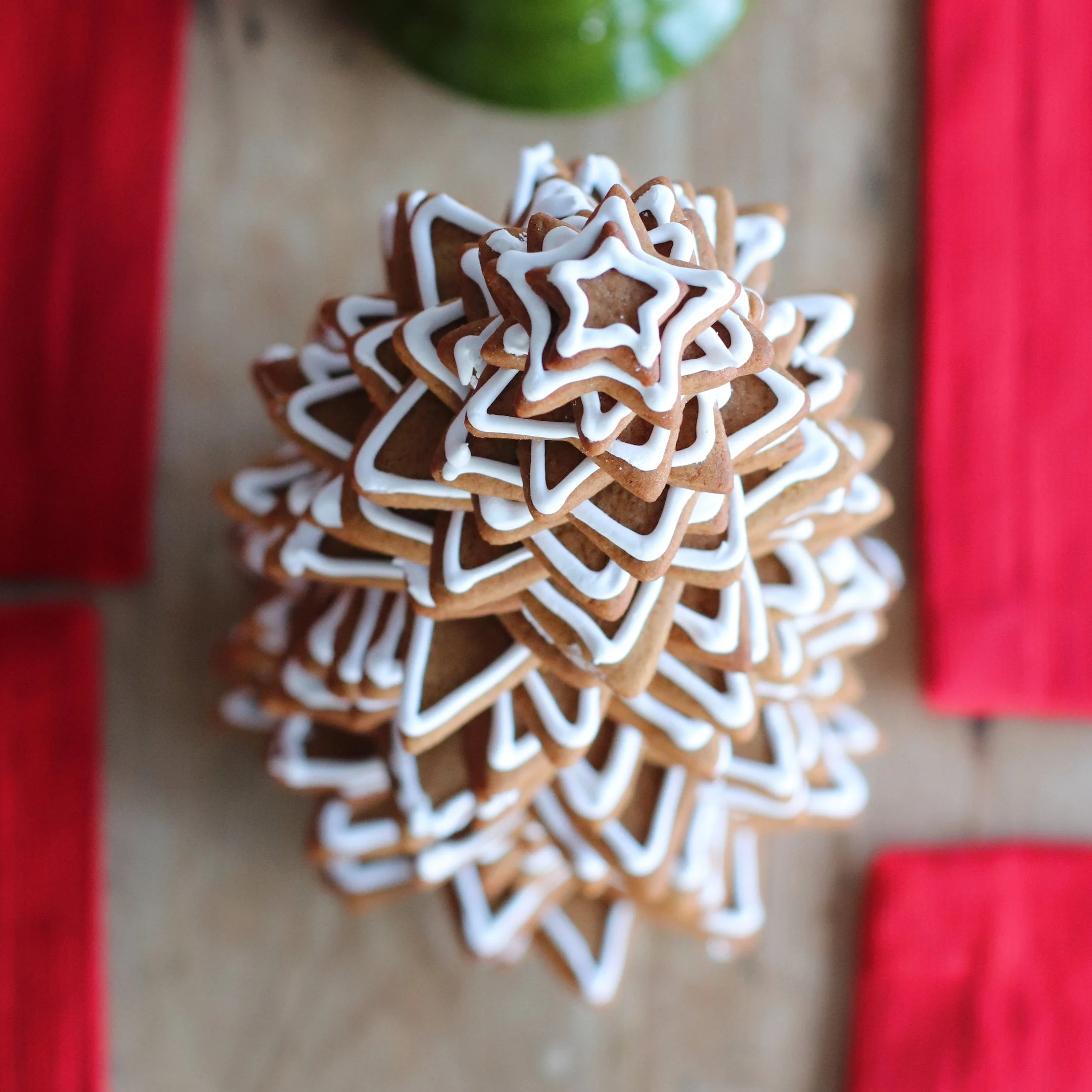The ideal dining table centerpiece is handmade, edible, and inexpensive, like this gingerbread tree. For this tree, I purchased a set of 10 star cookie cutters from Sur La Table, but I could have gotten by with half as many because sometimes the different cookie-cutter-sizes were barely noticeable. The tree in my picture uses 36 cookies, and of the 10 cookie-cutter-sizes, from largest to smallest, I used: 5 cookies from size one, 5 from size two, 5 from size three, 5 from size four, 4 from size five, 4 from size six, 3 from size seven, 2 from size eight, 2 from size nine, and 1 from size ten.
Instead of gluing the cookies together with icing, I used a drinking straw to cut a whole in the center of each cookie before baking and piled them onto a dowel-topped base. This enabled me to arrange and rearrange the cookies whenever I changed my mind about how many of each cookie-size to use (I finally decided to mostly use large cookies because the resultant tree looks more like a fir). This also makes the cookies removable and edible (warning: they harden if left out too long). For the cookie stand, I purchased the base at a craft store and drilled a hole in its center. I glued a ¼" dowel into the hole and cut it to the desired length (12" in my case).
I wish I was able to decorate cookies with creative little details. But I'm no artist, so I've decided that simplicity will suffice. (My parents didn't pass along their artistic genes to me; when we lost an enormous oak tree from the front yard of my childhood home, they made these amazing turtle stools for each of us.) Read more.




